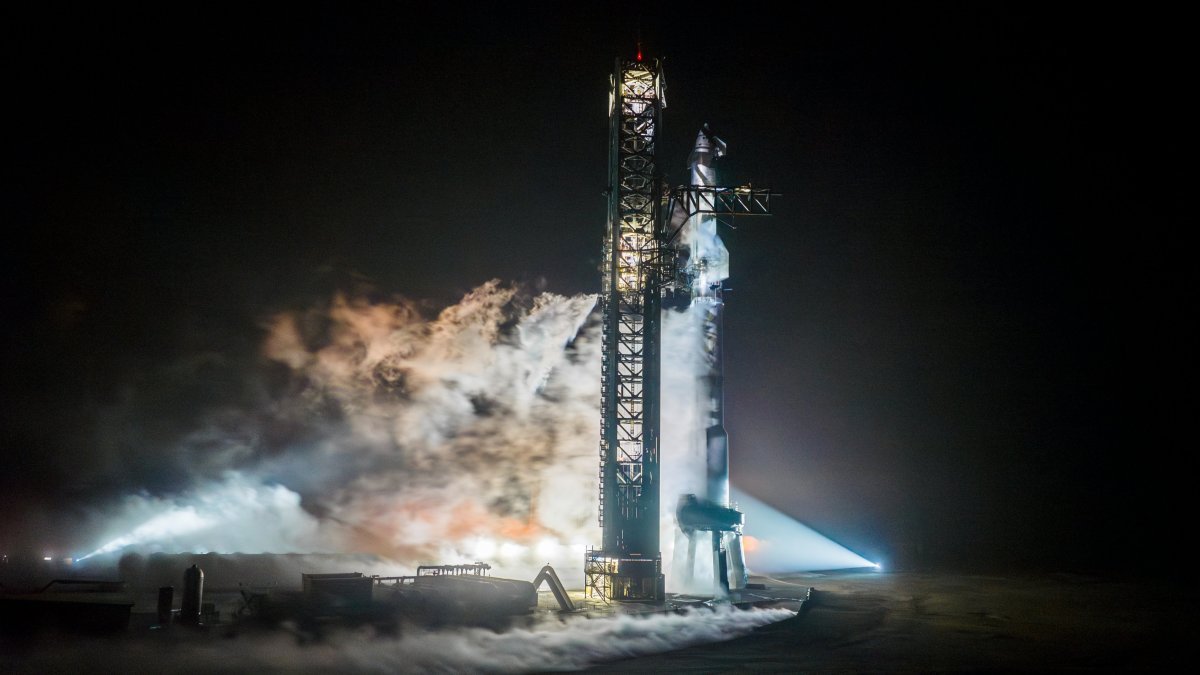SpaceX is gearing up for the third launch of its monumental Starship rocket, with a hopeful date set for March 14th, as officially announced on the company’s social media pages on Wednesday.
The Federal Aviation Administration (FAA) is the last remaining hurdle before the Starship can take flight, with their regulatory approval still pending. However, despite the FAA’s delay, recent events suggest that SpaceX is preparing for a launch in the near future. In fact, just last weekend, the teams at the Starbase facility in southwest Texas successfully completed a significant “wet dress” rehearsal, where the rocket was loaded with over 10 million pounds of propellant and the countdown sequence to T-minus 10 seconds was practiced.
After the FAA concluded their investigation into SpaceX’s second Starship launch at the end of last month, they required the company to fulfill 17 “corrective actions” before granting a modified license for the upcoming launch. If these actions are approved within the next week, the March 14th launch target should be achievable.
It’s worth noting that there was a seven-month gap between the first Starship orbital flight test in April of last year, and the second in November. Despite both tests resulting in mid-air explosions of the Super Heavy booster and Starship upper stage, the second test managed to exceed the first with the successful demo of several critical technologies that were previously unsuccessful.
With this third test, SpaceX is undoubtedly hoping to continue this trend of progress. However, it also introduces some ambitious objectives, such as conducting a propellant transfer demonstration during the Starship’s coasting phase and the first-ever relight of a Raptor engine in space. The ability to transfer propellant is crucial for completing the company’s multi-billion-dollar missions to the moon for NASA.
For the most part, the upcoming launch will follow the same basic mission profile as the previous two. If all goes according to plan, the steps in order would include: the Super Heavy booster separating from the Starship using the unique “hot staging” technique, where the upper stage’s engines are ignited to push away the booster. The booster would then perform its own “boost back burn,” similar to how Falcon 9 boosters return to Earth, and land in the Gulf of Mexico.
Meanwhile, the Starship upper stage would continue its ascent to orbit. Once it reaches orbital velocity, its engine would shut off, and it would coast almost the entire way around the world before splashing down in the ocean. However, unlike the previous missions, there will be one major change for this test – the company intends to fly a new trajectory that will result in the Starship splashing down in the Indian Ocean (instead of the usual Pacific Ocean near Hawaii) to attempt the Raptor engine relight in space.
On its website, SpaceX emphasizes that this launch is part of a continuous testing program to collect valuable data on the vehicle’s performance in a realistic flight environment.
“This rapid iterative development approach has been the basis for all of SpaceX’s major innovative advancements, including Falcon, Dragon, and Starlink,” the company states. “Recursive improvement is essential as we work to build a fully reusable transportation system capable of carrying both crew and cargo to Earth orbit, help humanity return to the Moon, and ultimately travel to Mars and beyond.”








